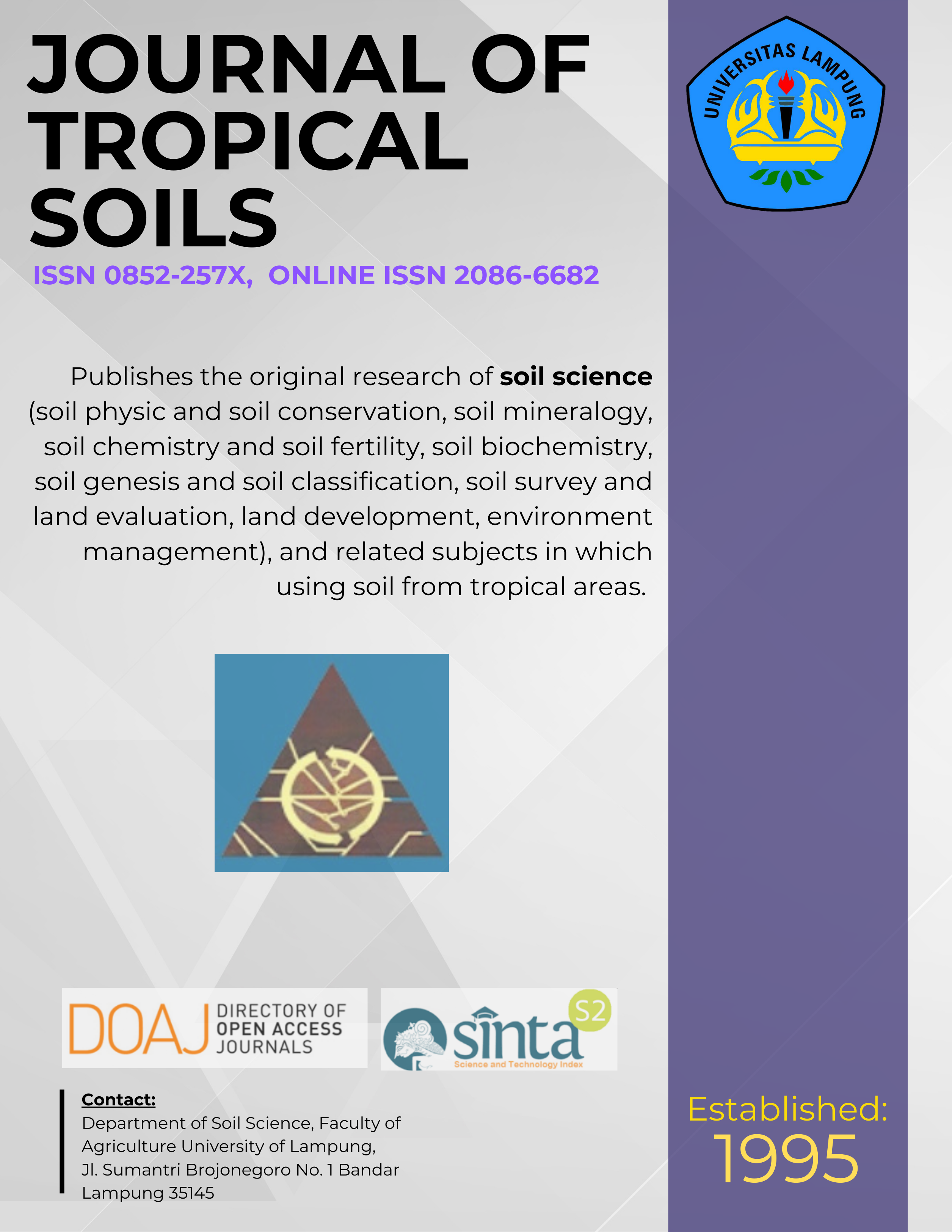Isolation of Cellulolytic Bacteria from Peat Soils as Decomposer of Oil Palm Empty Fruit Bunch
Main Article Content
Abstract
The aim of the research was to find out potential strainsof cellulolytic bacteria isolated from two tropical peat soils and to studythe potency of the isolated bacteria to decompose oil palm empty fruit bunch (EFB). The research was carried out in two stages: (1) isolation of cellulolytic bacteria from peat soils and (2) testing the potency of isolated bacteria to decompose oil palm EFB. The cellulolytic bacteria were isolated from two peat soils, i.e. a natural peat soil (forest) and a cultivated peat soil (has been used as agriculture land). Isolation of cellulolytic bacteria was conducted by preparing a series dilution of culture solutions using a streak plate method in a carboxymethyl cellulose(CMC) selective medium.Isolates that were able to form clear zones surrounding their bacterial colony were further tested to study the potency of the isolates to decompose cellulose in oil palm EFB. The cellulolytic activity of the selected isolates were further determined via production of reducing sugars in an oil palm EFB liquid medium using Nelson-Somogyi method. The results showed that there are six isolates of cellulolytic bacteria that have been identified in two tropical peat soils used in the current study. Two isolates are identified in a natural peat soil (forest) and four isolates are identified in a cultivated peat soil. The isolates collected are identified as Bacillus sp., Pseudomonassp. and Staphylococcus sp. Among the isolates, an isolate of GS II-1 produces the highest concentration of reducing sugars, namely 0.1012 unitmL-1or 101 ppm, indicating that the isolate of GS II-1 is highly potential to decompose oil palm EFB. Therefore, the isolate of GS II-1 can be used as a decomposer in the bio-conversion processes of oil palm EFB.
Keywords: isolation, bacteria, cellulolytic, oil palm empty fruit bunch (EFB), peat soil
Downloads
Article Details
Section
License for Authors
Authors who publish with this journal agree to the following terms:
- Authors retain copyright and grant the journal right of first publication with the work simultaneously licensed under a Creative Commons Attribution License that allows others to share the work with an acknowledgement of the work's authorship and initial publication in this journal.
- Authors are able to enter into separate, additional contractual arrangements for the non-exclusive distribution of the journal's published version of the work (e.g., post it to an institutional repository or publish it in a book), with an acknowledgement of its initial publication in this journal.
- Authors are permitted and encouraged to post their work online (e.g., in institutional repositories or on their website) prior to and during the submission process, as it can lead to productive exchanges, as well as earlier and greater citation of published work (See The Effect of Open Access).
License for Regular Users
Other regular users who want to cite, distribute, remix, tweak, and build upon author’s works, even for commercial purposes, should acknowledge the work’s authorship and initial publication in this journal, licensed under a Creative Commons Attribution License.

